Charlestown Breachway and Ninigret Pond - Charlestown
This is the best shorebirding area in Rhode Island. During the summer, hundreds of shorebirds feed on the mudflats and hundreds of terns roost on the flats. Getting to the birds requires a ford across a channel which, depending on the tide, is usually between knee and waist deep.
View Larger Map
Location
Charlestown Breachway State Beach, Charlestown, RI.
Owner/manager
Rhode Island Department of Environmental Management.
Directions
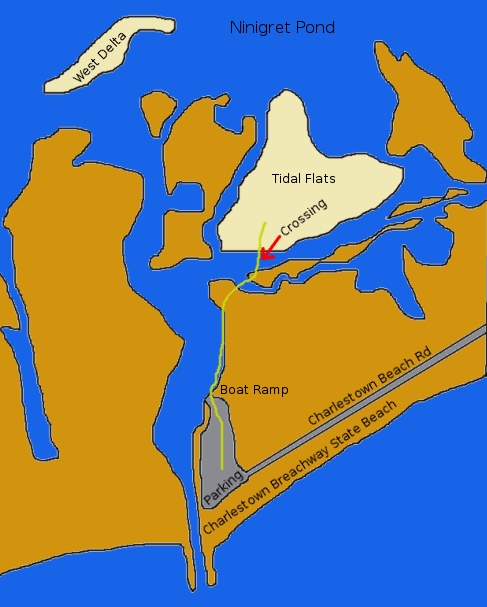
Walk Along the Green Line.
Park at the Charlestown Breachway State Beach. This parking area is shared by beach goers, recreational vehicles, fisherman, boaters, clam diggers and birders. To get there, from the corner of Matunuck School House Road and Charlestown Beach Road, go south on Charlestown Beach Road. Continue south, pass the Charlestown Town Beach parking area at 1.5 miles, to the end of Charlestown Beach Road and the entrance to the Charlestown Breachway State Beach. See the RI DEM Site for information about parking fees.
There is limited parking available at the breachway. During busy beach days, the lot can fill up by 9:00 am.
Habitat
Ocean, pond, salt marsh, and mud flats.
Description
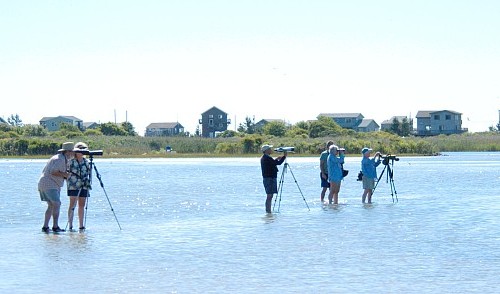
High Tide on the Flats
From the parking area, walk north to the boat ramp and follow the shoreline to the point, where a channel cuts east (right). With a scope, you can look across the channel to the flats. However, to enjoy the true flavor of the mud flats of Ninigret Pond, you must cross the channel to the flats. The easiest time to cross is at low tide, when the crossing is usually about two to three feet deep. At high tide, the crossing can be four to five feet deep. The depth of the channel is not uniform, and the water depth is affected by the weather, so use caution when crossing the channel.
Since shorebirding season correlates with beach season, the birds are often disturbed by people and pets. Unfortunately, it is not uncommon for people to allow their children or dogs to chase the flocks of shorebirds, gulls and terns. Although there may be no way to prevent this, the best way to avoid witnessing it is to visit early in the morning.
Best Seasons to Visit
The Ninigret Pond flats are productive from the first week of July through the second week of September.Birds Most Likely to Be Seen
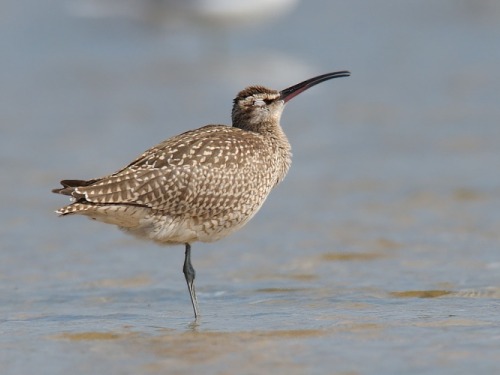
Whimbrel
There is a good variety of herons and egrets including, infrequently, Tricolored Heron and Yellow-crowned Night-Heron. Among the large concentrations of Common Terns, one can often find Roseate, Forster's and Least Terns. With a little luck, you might find a Black, Royal or Caspian Tern as well.
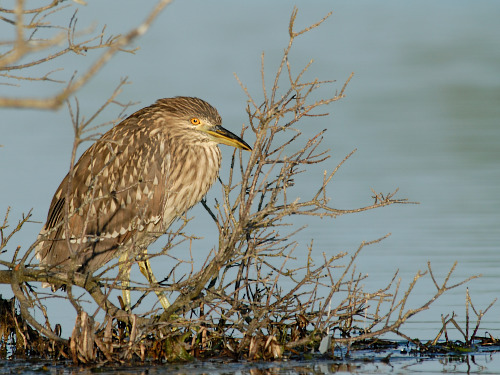
Black-crowned Night-Heron
There should be a great variety of shorebirds. The following species of plover are to be expected: Black-bellied, Semipalmated and Piping. Sandpiper species should include Least, Semipalmated, White-rumped and Pectoral. Less expected would be Western and Baird's Sandpipers. More spectacular species one may hope to encounter are Stilt Sandpiper, Whimbrel, Hudsonian Godwit and Marbled Godwit.
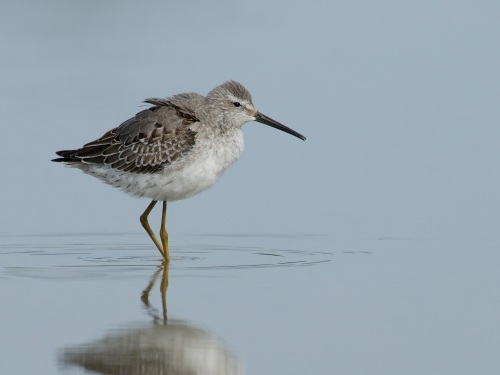
Stilt Sandpiper
The most interesting winged visitor to Ninigret Pond was an adult Mongolian Plover (Lesser Sand-Plover) found on July 24, 1999.
The saltmarsh vegetation surrounding the flats provides habitat for nesting Marsh Wren and Saltmarsh and Seaside Sparrows. Willow Flycatchers also nest in this habitat.
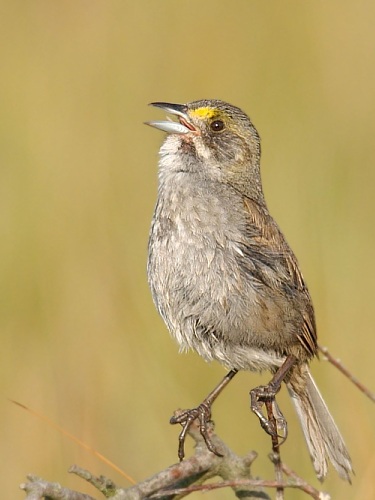
Seaside Sparrow
Birds that May be Seen in Other Seasons
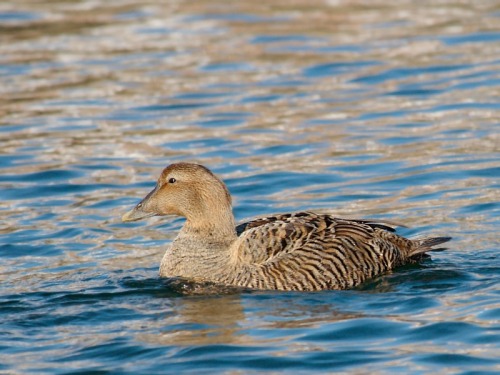
Common Eider
A visit to the breachway in the winter should yield Common and Red-throated Loons, Common Eider and all three species of scoter. These birds can be found from the breachway jetty. The parking area can have Horned Larks and Snow Buntings from late fall through early spring.
Potential obstacles
- Bring insect repellent. Mosquitoes can be bad in and near the vegetation. Fortunately, they are not a problem out on the flats.
- See the RI DEM Site for information about parking fees.
- The terrain can be rocky and slippery. Wear suitable footwear.
- Take the usual sun protection precautions.
Summary
Once you have crossed the channel, the "peeps" will walk within a few feet of you. They care little about your presence. This ability to get so close to these birds makes the Ninigret Pond mud flats special.
External Links
Thanks to Scott Tsagarakis for contributing content for this page.